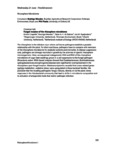Please use this identifier to cite or link to this item:
http://www.alice.cnptia.embrapa.br/alice/handle/doc/1036710Full metadata record
| DC Field | Value | Language |
|---|---|---|
| dc.contributor.author | CHAPELLE-PINEAU, E. | pt_BR |
| dc.contributor.author | MENDES, R. | pt_BR |
| dc.contributor.author | BAKKER, P. A. H. M. | pt_BR |
| dc.contributor.author | RAAIJMAKERS, J. M. | pt_BR |
| dc.date.accessioned | 2016-02-13T03:26:40Z | - |
| dc.date.available | 2016-02-13T03:26:40Z | - |
| dc.date.created | 2016-02-12 | pt_BR |
| dc.date.issued | 2015 | pt_BR |
| dc.identifier.citation | In: RHIZOSPHERE, 4., 2015, Maastricht. Stretching the interface of life: abstracts... Maastricht: Wageningen University & Research Centre and the Netherlands Institute of Ecology, 2015. | pt_BR |
| dc.identifier.uri | http://www.alice.cnptia.embrapa.br/alice/handle/doc/1036710 | pt_BR |
| dc.description | The rhizosphere is the infection court where soil-borne pathogens establish a parasitic relationship with the plant. To infect root tissue, pathogens have to compete with members of the rhizosphere microbiome for available nutrients and microsites. In disease-suppressive soils, pathogens are strongly restricted in growth by the activities of specific rhizosphere microorganisms. Here, we sequenced metagenomic DNA and RNA of the rhizosphere microbiome of sugar beet seedlings grown in a soil suppressive to the fungal pathogen Rhizoctonia solani. rRNA-based analyses showed that Oxalobacteraceae, Burkholderiaceae, Sphingobacteriacea and Sphingomonadaceae were significantly overrepresented in the rhizosphere upon fungal invasion. Metatranscriptomics revealed that stress-related genes (ppGpp metabolism, oxidative stress) were upregulated in these bacterial families. We postulate that the invading pathogenic fungus induces, directly or via the plant, stress responses in the rhizobacterial community that lead to shifts in microbiome composition and to activation of antagonistic traits that restrict pathogen infection. | pt_BR |
| dc.language.iso | eng | eng |
| dc.rights | openAccess | eng |
| dc.subject | Microbioma | pt_BR |
| dc.title | Fungal invasion of the rhizosphere microbiome. | pt_BR |
| dc.type | Resumo em anais e proceedings | pt_BR |
| dc.date.updated | 2016-02-13T03:26:40Z | pt_BR |
| dc.subject.thesagro | Fungo | pt_BR |
| dc.subject.thesagro | Rizosfera | pt_BR |
| dc.format.extent2 | 100 | pt_BR |
| riaa.ainfo.id | 1036710 | pt_BR |
| riaa.ainfo.lastupdate | 2016-02-12 | pt_BR |
| dc.contributor.institution | E. CHAPELLE-PINEAU, Wageningen University, Netherlands; RODRIGO MENDES, CNPMA; P. A. H. M. BAKKER, Utrecht University, Netherlands; J. M. RAAIJMAKERS, Netherlands Institute of Ecology (NIOO-KNAW), Netherlands. | pt_BR |
| Appears in Collections: | Resumo em anais de congresso (CNPMA)  | |
Files in This Item:
| File | Description | Size | Format | |
|---|---|---|---|---|
| 2015RA070.pdf | 396.84 kB | Adobe PDF |  View/Open |









